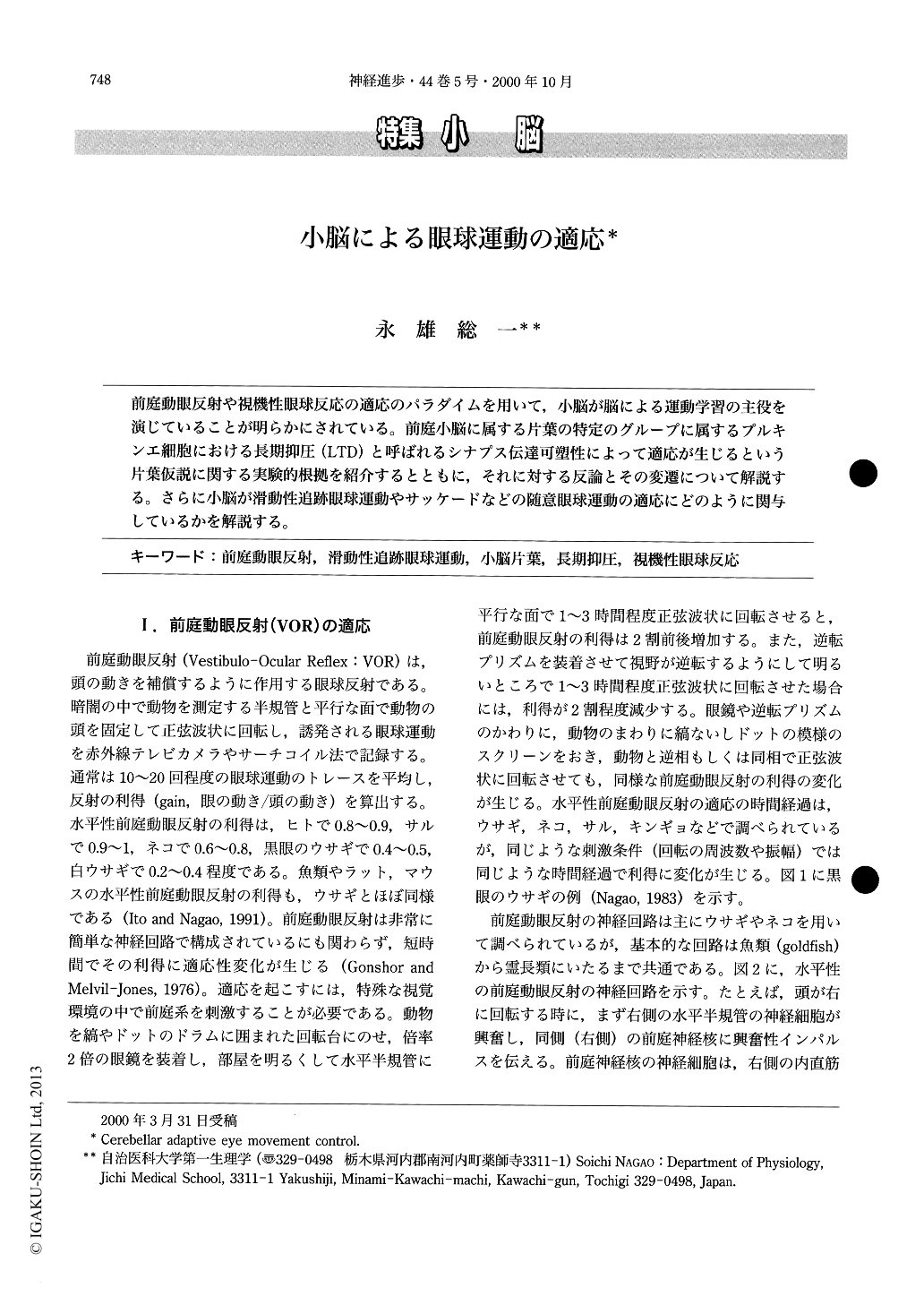Japanese
English
特集 小脳
小脳による眼球運動の適応
Cerebellar adaptive eye movement control.
永雄 総一
1
Soichi NAGAO
1
1自治医科大学第一生理学
1Department of Physiology, Jichi Medical School
キーワード:
前庭動眼反射
,
滑動性追跡眼球運動
,
小脳片葉
,
長期抑圧
,
視機性眼球反応
Keyword:
前庭動眼反射
,
滑動性追跡眼球運動
,
小脳片葉
,
長期抑圧
,
視機性眼球反応
pp.748-759
発行日 2000年10月10日
Published Date 2000/10/10
DOI https://doi.org/10.11477/mf.1431901186
- 有料閲覧
- Abstract 文献概要
- 1ページ目 Look Inside
前庭動眼反射や視機性眼球反応の適応のパラダイムを用いて,小脳が脳による運動学習の主役を演じていることが明らかにされている。前庭小脳に属する片葉の特定のグループに属するプルキンエ細胞における長期抑圧(LTD)と呼ばれるシナプス伝達可塑性によって適応が生じるという片葉仮説に関する実験的根拠を紹介するとともに,それに対する反論とその変遷について解説する。さらに小脳が滑動性追跡眼球運動やサッケードなどの随意眼球運動の適応にどのように関与しているかを解説する。
Sustained exposure to retinal slips induced adaptation of the gain of the vestibulo-ocular reflex (VOR) and/ or optokinetic response (OKR) eye movements. Results of lesions, recordings of unit activities of neurons, and pharmacological studies consistently suggest that the adaptation is actually induced by changes of synaptic transmission efficacy, i. e., long-term depression (LTD), in a particular group (zone II) of Purkinje cells in the cerebellar flocculus.

Copyright © 2000, Igaku-Shoin Ltd. All rights reserved.


